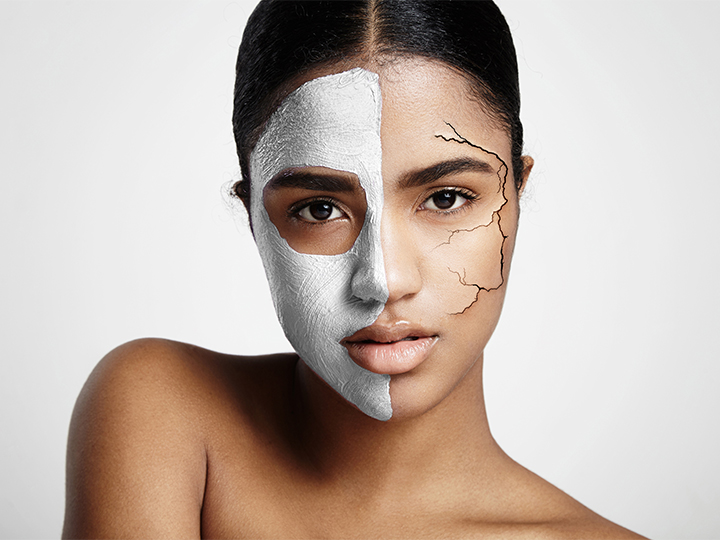
Certain ingredients are known to be toxins, hormone disruptors, carcinogens, cheap harsh detergents, skin irritants or allergens — yet they’re commonly found in many personal care products on the market today! So before you buy your next bottle, be sure to read the entire label ingredient list looking for anything that may not be safe.
It’s all pretty scary when you delve into the numerous studies that have been published about what’s being used in cosmetics, shampoos, conditioners, facial moisturizers, serums and body lotions. So do your homework. The better informed you are, the better off you’ll be. And do your best to avoid these bad boys:
Chemicals used as preservatives to prevent microbial growth and extend shelf life. Sounds okay so far. But not so fast — there’s this: They easily penetrate skin and may cause skin rashes, but “of greatest concern is that parabens are known to disrupt the endocrine system, and cause reproductive and developmental disorders,” according to the non-profit Campaign for Safe Cosmetics (CSC). The European Commission on Endocrine Disruption lists parabens as a Category 1 priority substance, based on evidence that it interferes with hormone function.
Cheap, harsh detergents which are known to be skin, lung, and eye irritants. A major concern about SLS is its potential to interact and combine with other chemicals to form nitrosamines, a carcinogen. And at the very least, sulfates strip away your natural oils, leaving your hair or skin parched. Talk about adding insult to injury.
Synthetic compounds widely used as preservatives. They can cause allergic reactions, disrupt hormones, and are listed as possible human carcinogens by The International Agency for Research on Cancer. Under the Convention for the Protection of the Marine Environment of the North-East Atlantic, BHA is listed as a chemical of potential concern, noting its toxicity to aquatic organisms and potential to bioaccumulate.
A family of conditioning, cleaning and emulsifying agents that go by many names. These synthetic chemicals are frequently contaminated with 1,4-dioxane, which the U.S. government considers a probable human carcinogen and which readily penetrates the skin. Talk about Contamination with a capital C!
Petrolatum, or petroleum jelly, derived from petroleum, is often used in personal care products as a moisturizing agent. These distillates may cause contact dermatitis and are often contaminated with cancer-causing impurities. They may be produced in oil refineries at the same time as automobile fuel, heating oil and chemical feedstocks. This is not okay!
Chemicals which prevent microbes from growing in water-based products, they’re absorbed through the skin and scalp. They can cause allergic skin reactions, immune system damage, and cancer. Hey, aren’t those biology class specimens preserved with formaldehyde?
Like FD&C Red 6 and 27, among others. Made from petroleum or coal tar, they’re most likely carcinogenic and are linked to ADHD in children.
Which may have up to 200 chemical ingredients! “A 2016 study assessed self-reported health effects from fragrance. This survey of a random sample of US residents found that 99.1% of participants are exposed to fragranced products at least once a week from their own use, others’ use, or both. Participants also reported an extensive list of health effects experienced when exposed to fragrance ranging from migraines and asthma to gastrointestinal and cardiovascular problems. The findings showed that a high percentage of the participants did not know of the chemicals included in fragrance and would not continue to use a fragranced product if they had previously known it emitted pollutants,” as per the Campaign for Safe Cosmetics.
A chemical which is primarily used as an anti-static agent, a surfactant and an antimicrobial. Designed by the fabric industry for use as a fabric softener, this toxic chemical has somehow found its way into many hair and skin care products. Some companies have started using it as a key conditioning ingredient in their products, as it’s a cheaper alternative to natural ingredients that achieve the same task, like certain conditioning proteins. This chemical has been shown to cause skin and eye irritation and has potential negative effects on the nervous system. Why would anyone want to wash their hair and rub their face with chemical fabric softener!
A family of chemicals, present in many personal care products, used as emulsifiers. The Campaign for Safe Cosmetics cites three different studies that report DEA affects human male reproductive health. DEA alters sperm structure, causing abnormalities that affect the sperm’s ability to swim and fertilize the egg. DEA accumulates in the liver and kidney, causing organ toxicity and also possible neurotoxic effects such as tremors. Another study suggests that memory function and brain development in offspring could be permanently affected by mothers’ exposure to DEA.
Whew, that’s a lot of information to digest. The question that looms large is why are these ingredients being used so widely? In large part, it boils down to the profit motive: it’s less expensive to use mass-produced synthetic chemicals. It’s impossible to avoid every single one, but you can do your part in limiting the amount of toxins your body is exposed to. Read labels on personal care products the way you do for the food you buy. Ask questions. And, don’t buy based on price alone — because you’ll get just what you pay for.
LEARN ABOUT safe, plant-based products for you and your family in The Many Benefits Of Natural Hair and Skin Care.